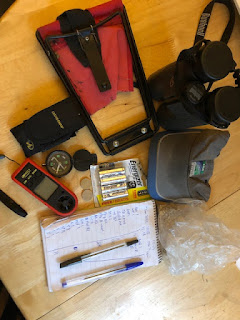One of the pleasures of patch watching is that you can always turn up something new. You become so familiar with the area that new arrivals stand out. In this case today I noticed a species that must have been here for years. Whilst finishing off my walk this morning I noticed a vibrant light/white green lichen on a branch. Many of the trees are covered in lichens of different types and colours but this one caught my eye.
It was on a dead branch jutting out at eye level and its bright colour and shape made it stand out. It looked fresh and new, like it had just grown there today. No wind nor rain had sullied it. It was intact and strong, each tendril intact and turgid.
I have a kind of Stockholm situation with lichen as a whole. They are a fascinating organism, part fungi, part algae living in symbiosis and I got my greatest education in them during my time at University. Between my 2nd and 3rd Years, I spent 10 days in the Burren in Western Ireland studying Mosses, Fungi and Lichens. As an ornithologist and zoologist, I was never particularly fond of the less mobile species on the plant, and the ten days was tough to stay interested.
Despite my reticence, I came to appreciate them greatly. I know notice them whereas once they were ignored and I understand their growth forms and ecology There is a simple beauty to them and an elegance. The leafy structures are good indicators of clean air and they are important sources of essential oils and other chemicals.
This particular lichen appears to be the Oakmoss Lichen - Evernia prunastri. This species is not an uncommon one and grows readily on trees. In France, it is harvested for its perfume fixatives and in Italy, it is grown as a bio-monitor to analyse bioaccumulation of heavy metals.


